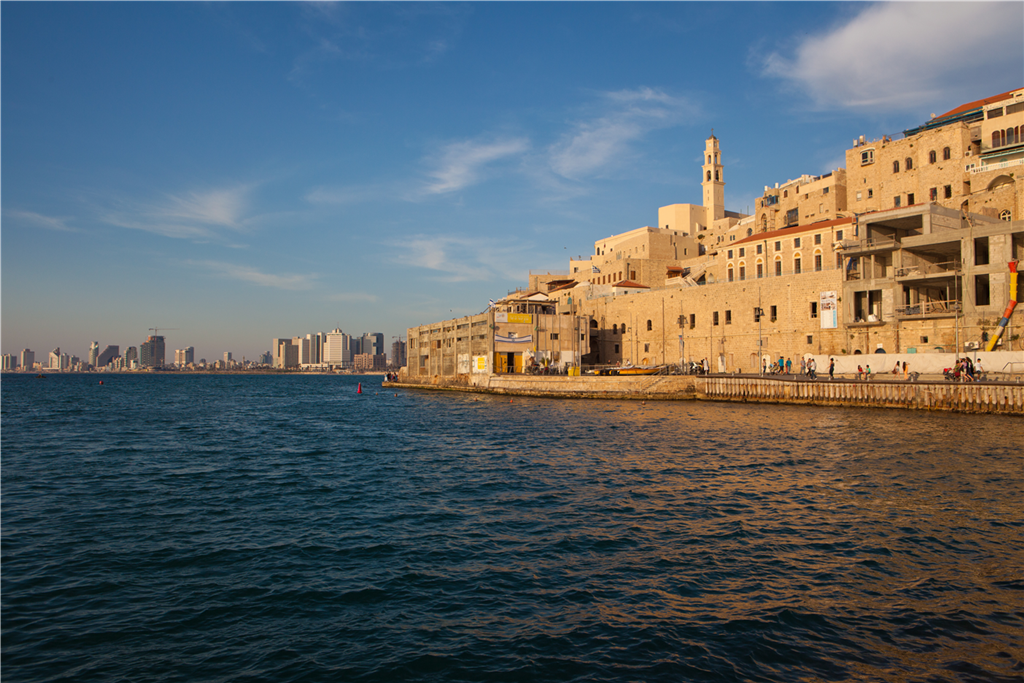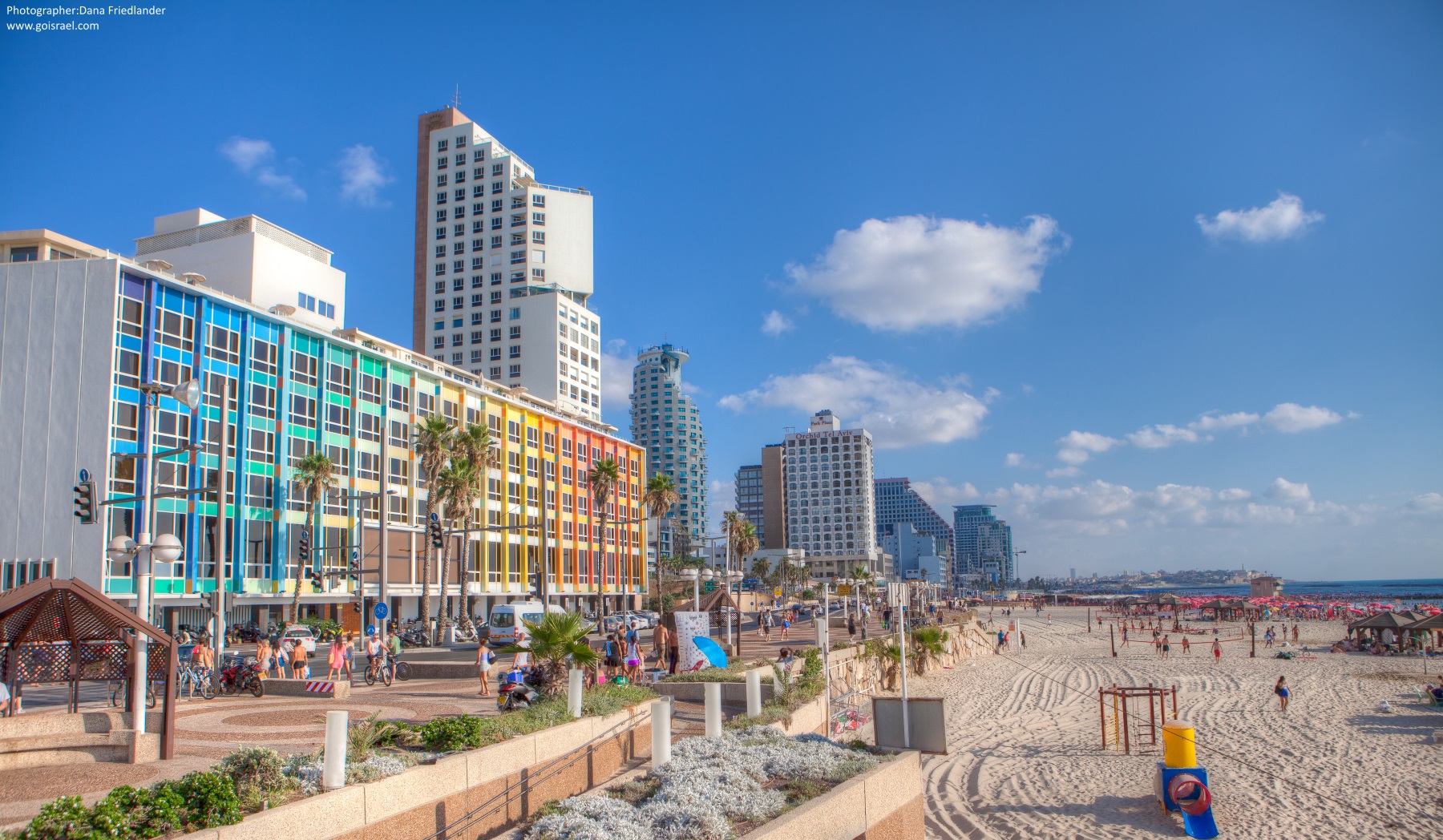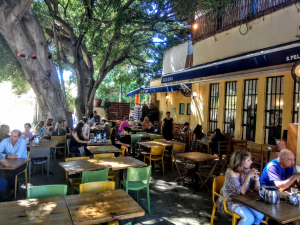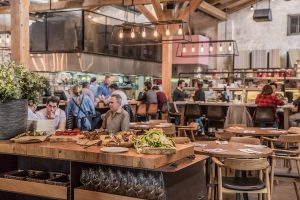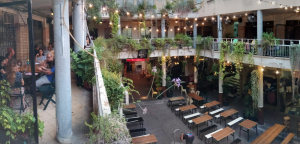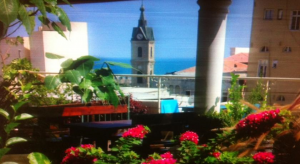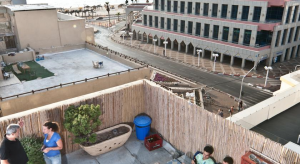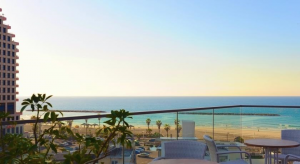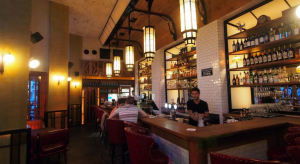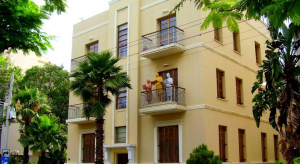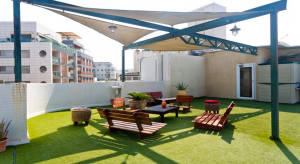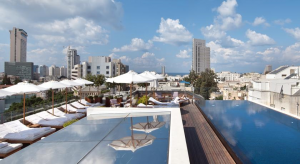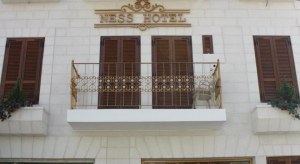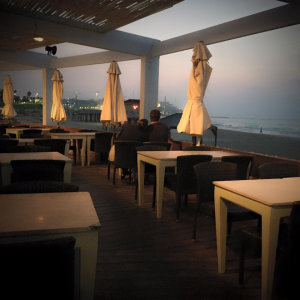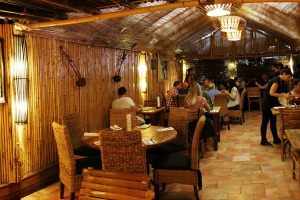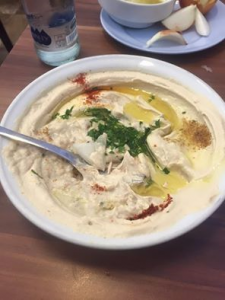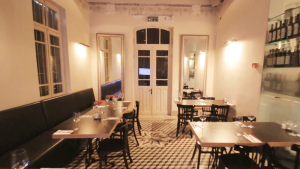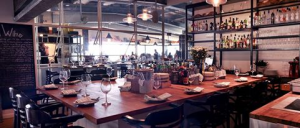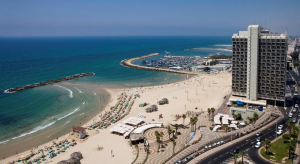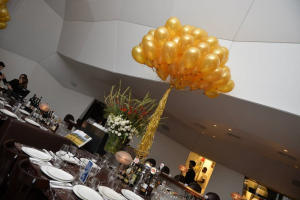The smallish gulf of Jaffa has been the site of a fortified port town for at least 4000 years. During the 19th century the town’s population grew from about 2,500 (1806) to 17,000 (1886). The old city walls could no longer contain the population, and they were destroyed in the 1870s. New, more spacious neighborhoods started to appear.
Tel Aviv (meaning literally “Hill of Spring”) itself was founded in 1909 by a group of distinguished Jewish residents of Jaffa. They envisaged a European-style garden suburb, with wide streets and boulevards. Leaving Jaffa wasn’t, however, only a question of an upgrade in lifestyle. Moving out of the Arab-dominated town also represented their belief in the Jewish national movement, their belief in Zionism. Before being a city, Tel Aviv was one of the many titles of Herzel’s Zionist utopia – The Old New Land book. Setting out with a grand vision, the 60 Tel Aviv founders have started out by building the first mid-eastern urban center with running water, no small wonder in that part of the world in 1909.
Tel Aviv grew steadily under Ottoman law until WWI. By the end of the war the British took over the Holy Land. An event the Jewish community saw as encouraging, while and the Muslim community viewed as a turn-for-the-worst from the previous Islamic ruler. In May 1921, an Arab mob attacked a Jewish immigration center, killing dozens of Jews. Another group broke the windows stores in the Jewish street in Jaffa and a mob armed with knives and sticks have made his way towards Tel Aviv. Before 1921 most Jews worked and lived in Jaffa, after the attack thousands of the 16,000 Jews of Jaffa moved north to Tel Aviv. The suburb had become a city and within a decade, Tel Aviv had become the center of culture, commerce and light industry for the entire Jewish population of the country as well as the British soldiers. 1938 marked the opening of Tel Aviv port, an important milestone marking the end of its dependency on Jaffa. By this time, Tel Aviv was already the biggest city in the country, with 130,000 residents. After Israel’s declaration of independence in 1948, Jaffa became a district of Tel Aviv and the city’s name was officially changed to Tel Aviv-Yafo.
Today, Tel Aviv-Yafo represents the heart of a thriving, Israeli metropolis – the greater metropolitan area comprises a number of separate municipalities with approximately 3.1 million people living in a 25 km long sprawl along the Mediterranean coast – with around 392,700 in Tel Aviv-Yafo itself making it the second largest city in Israel after Jerusalem(760,800 inhabitants). Bat Yam, Holon, Ramat Gan, Givatayim, Bnei-Brak, Petah Tikva, Rishon LeZion, Ramat Ha-Sharon, Rehovot and Herzliya are the other major cities in the coastal area commonly known as Gush Dan.
Whilst Jerusalem is Israel’s capital city where most government departments are located, Tel Aviv and its satellite cities form the economic and cultural center. It is known as “the city that doesn’t stop” and indeed you will find that the nightlife and culture are on around the clock. In summer it is not unusual to see the beach boardwalk bustling with people at 4AM and the clubs and bars usually pick up around midnight until morning, giving Tel Aviv a well deserved reputation of being a party town. It is the pinnacle of secular life in Israel.
In July 2003 Tel Aviv-Yafo was declared a cultural UNESCO World Heritage site for the many “International” style (also known as Bauhaus after the German school it originated from) buildings built in the city during the 1930s-50s. As this style emphasized simplicity and the white color, Tel Aviv is also called the White City.
Tel Aviv lies alongside the Mediterranean coastline. With few exceptions, all points of interest for tourists are in a rectangle defined by the sea to the west, the Yarkon River to the north, the Ayalon highway to the east, and Salame Road to the south. This rectangle is separated into two long strips by Ibn-Gvirol Street, starting from the Yarkon River and changing its name to Yehuda Halevy. Most of the attractions are in the west of these strips.
Tel Aviv developed from south to north. To the south-western corner of the rectangle you will find old Jaffa. To its north, is the first Jewish neighborhood outside Jaffa, Neve Tzedek (meaning “Oasis of Justice”). To Neve Tzedek’s east is Florentin, a 1920s light-industry quarter founded by Jews from Salonika in Greece that in recent years has turned into a trendy neighborhood for young people, albeit one with a large population of older and poor people; and then the Central Bus Station area, now home to foreign workers from around the world.
To the north of Neve Tzedek is “Kerem Ha’Temanim” (the Yemenite Vineyard), a crowded but picturesque neighborhood dating to the early 20th century and east and north of here lies the city center, a chiefly residential area built in the 1920s and 1930s, where the majority of Bauhaus (“International”) style architecture is to be found. Further north and east, the “old north” (not to be confused with “the north” on the other side of the Yarkon), is a more spacious residential area built during the 1940s and 1950s.
Tel Aviv residents often speak of a north-south divide in Tel Aviv-Yafo. The north is usually associated with a continental, chic, and suburbanite lifestyle centered around Kikar haMedina and “Ramat Aviv”. To the south, the city takes on a more working-class and eastern, albeit evermore trendy, urban feel. A crude divide would be that all neighborhoods north of the Yarkon River are considered “north”; the area between the sea in the west, Ayalon Highway in the east, Yarkon River in the north and Salame Street in the south is considered “central” Tel Aviv. The area south of Salame Street is generally south Tel Aviv, and Jaffa lies to the South-West. North Tel Aviv is generally more residential and family-oriented; central Tel Aviv is the hipper-younger area with many single people and couples in their 20s and 30s; south Tel Aviv is a rapidly gentrifying area with a mixed population – from older working-class people to artists to migrant African workers.
Tel Aviv is likely the most liberal city in Israel and in the Middle East – as it is no-less liberal than Western Europe’s liberally-inclined major cities. It has a bustling civil society and is home to many activist movements and NGOs. Its residents tend to have liberal attitudes towards gay and lesbian rights, and, in fact, Tel Aviv hosts the largest gay pride parade in Israel (the only country in the Middle East where homosexuality is not considered illegal). It is also a destination for gay Palestinian refugees, unable to pursue their lifestyle in the Palestinian territories. With its liberalism comes a dose of sophistication and some will say detachment, and Tel Aviv is often dubbed “The Bubble” or “Medinat Tel Aviv” (“The State of Tel Aviv”) by residents and non-residents alike. Some ultra-Orthodox Israelis have even dubbed the city a modern day “Sodom and Gomorrah”, due to its hedonistic lifestyle.


